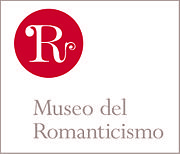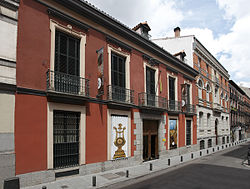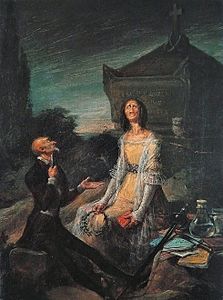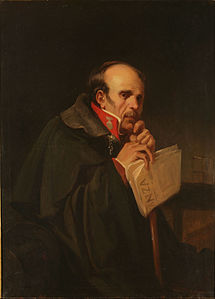
The Museo del Prado, officially known as Museo Nacional del Prado, is the main Spanish national art museum, located in central Madrid. It houses collections of European art, dating from the 12th century to the early 20th century, based on the former Spanish royal collection, and the single best collection of Spanish art. Founded as a museum of paintings and sculpture in 1819, it also contains important collections of other types of works. The numerous works by Francisco Goya, the single most extensively represented artist, as well as by Hieronymus Bosch, El Greco, Peter Paul Rubens, Titian, and Diego Velázquez, are some of the highlights of the collection. Velázquez and his keen eye and sensibility were also responsible for bringing much of the museum's fine collection of Italian masters to Spain, now one of the largest outside of Italy.

Gustavo Adolfo Claudio Domínguez Bastida, better known as Gustavo Adolfo Bécquer, was a Spanish Romantic poet and writer, also a playwright, literary columnist, and talented in drawing. Today, some consider him one of the most important figures in Spanish literature, and is considered by some as the most read writer after Miguel de Cervantes. He adopted the alias of Bécquer as his brother Valeriano Bécquer, a painter, had done earlier. He was associated with the romanticism and post-romanticism movements and wrote while realism enjoyed success in Spain. He was moderately well-known during his life, but it was after his death that most of his works were published. His best-known works are the Rhymes and the Legends, usually published together as Rimas y leyendas. These poems and tales are essential to studying Spanish literature and common reading for high-school students in Spanish-speaking countries.
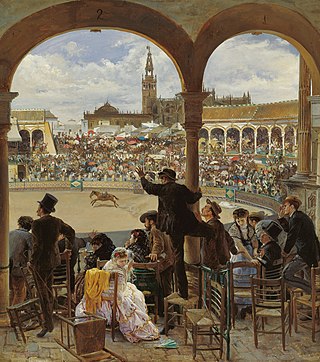
Costumbrismo is the literary or pictorial interpretation of local everyday life, mannerisms, and customs, primarily in the Hispanic scene, and particularly in the 19th century. Costumbrismo is related both to artistic realism and to Romanticism, sharing the Romantic interest in expression as against simple representation and the romantic and realist focus on precise representation of particular times and places, rather than of humanity in the abstract. It is often satiric and even moralizing, but unlike mainstream realism does not usually offer or even imply any particular analysis of the society it depicts. When not satiric, its approach to quaint folkloric detail often has a romanticizing aspect.
Romanticism arrived late and lasted only for a short but intense period, since in the second half of the 19th century it was supplanted by Realism, whose nature was antithetical to that of Romantic literature.

Friar Juan Bautista Maíno, or Mayno was a Spanish Baroque painter.
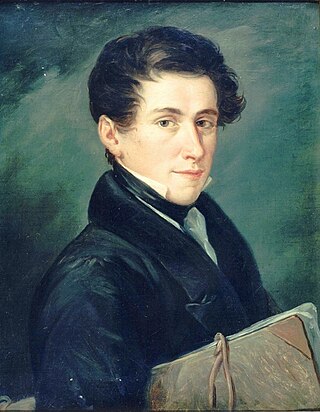
Leonardo Alenza y Nieto was a Spanish painter and engraver in the Romantic style; associated with the Costumbrista movement.

Francisco "Paco" Madrid was a Spanish (Catalan) critic, editor, essayist, historian, journalist, novelist, playwright, and screenwriter. He was also a politician.
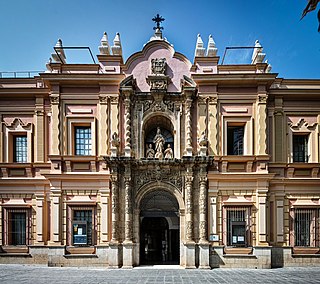
The Museum of Fine Arts of Seville is a museum in Seville, Spain, a collection of mainly Spanish visual arts from the medieval period to the early 20th century, including a choice selection of works by artists from the so-called Golden Age of Sevillian painting during the 17th century, such as Murillo, Zurbarán, Francisco de Herrera the younger, and Valdés Leal.

The Saint Sebastian Church or Iglesia de San Sebastián is a 16th-century church in central Madrid, Spain. It is located on Atocha street, #39.

Diego Martínez Torrón is a professor of Spanish Literature at the University of Córdoba, Spain, and a writer, author of essays, poetry and novels. He has been a speaker at many of the major universities in Europe and the United States. A specialist in nineteenth and twentieth century Spanish literature he has published numerous books on Spanish Romanticism, with interpretive contributions and unpublished texts. He has edited the most faithful edition of the complete works of authors such as José de Espronceda and the Duque de Rivas. He has also written about Lista and Quintana and the work of Spanish progressive liberals from the early nineteenth century to the end of the period of Romanticism. He has studied the poetic thought of Juan Ramón, Octavio Paz and José Bergamin. He has also dedicated numerous studies to the works of Cervantes. He has studied the narrative of Álvaro Cunqueiro, Juan Benet, Azorín and has published the first annotated edition of El Ruedo Ibérico of Valle-Inclán. His concept of literary methodology stems from a new, non-Marxist approach to the binomial ideology and literature. He has edited Don Quixote, studying the thinking of Cervantes.

Valeriano Domínguez Bécquer was a Spanish painter and graphic artist, who often worked in the costumbrismo style.
Ángel María Cortellini Hernández was a Spanish painter. He received the gold medal of the National Exhibition for his painting, Retrato de señora.

La Ilustración Española y Americana was a weekly Spanish magazine that was published from 1869 to 1921 on the 8th, 15th, 22nd and 30th of every month. It was also published biweekly.
Literary costumbrismo is a minor genre of Spanish literature most popular in the 19th century. It is the literary counterpart to the artistic movement known as costumbrismo, which depicted social customs often without analysis or critique. Its style is similar to literary realism. In its most popular and least intellectual form, it describes the commonplace and ordinary aspects of daily life. Appearing in prose and hardly ever in verse, it reached its peak with the novel of manners and in the minor genre called custom picture in journalism. In theater, it manifested in the comedy of manners and sainete, a continuation of the earlier entremés.
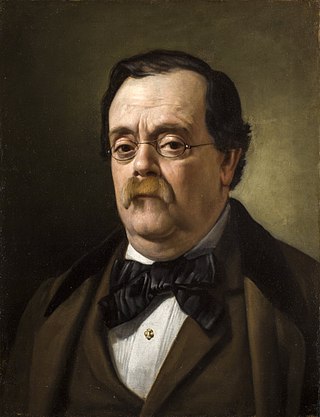
Antonio Cabral Bejarano was a Spanish painter, considered to be an adherent of both the Europe-wide Romantic painting and the specifically Hispanic painting school of Costumbrismo. His ancestors for several earlier generations were painters, and he was initially trained by his father. He was mainly active in his native city of Seville, getting many commissions from its municipal government. He was the first Director of the Museum of Fine Arts of Seville.
Andres Rossi was a Spanish artist. He worked as a painter, draughtsman, print maker, sculptor and writer in Madrid and Seville.

Manuel Cabral Aguado-Bejarano was a Spanish painter in the Romantic style; best known for his Costumbrismo scenes.

Joaquín Domínguez Bécquer was a Spanish Costumbrista painter.

Guillermo Diaz-Plaja Contestí was a Spanish literary critic, historian, essayist, and poet.

Julián Romea Yanguas was a Spanish theater actor and writer. He heads a theatrical dynasty that also includes his nephew Julián Romea Parra and his son Alberto Romea Catalina.
